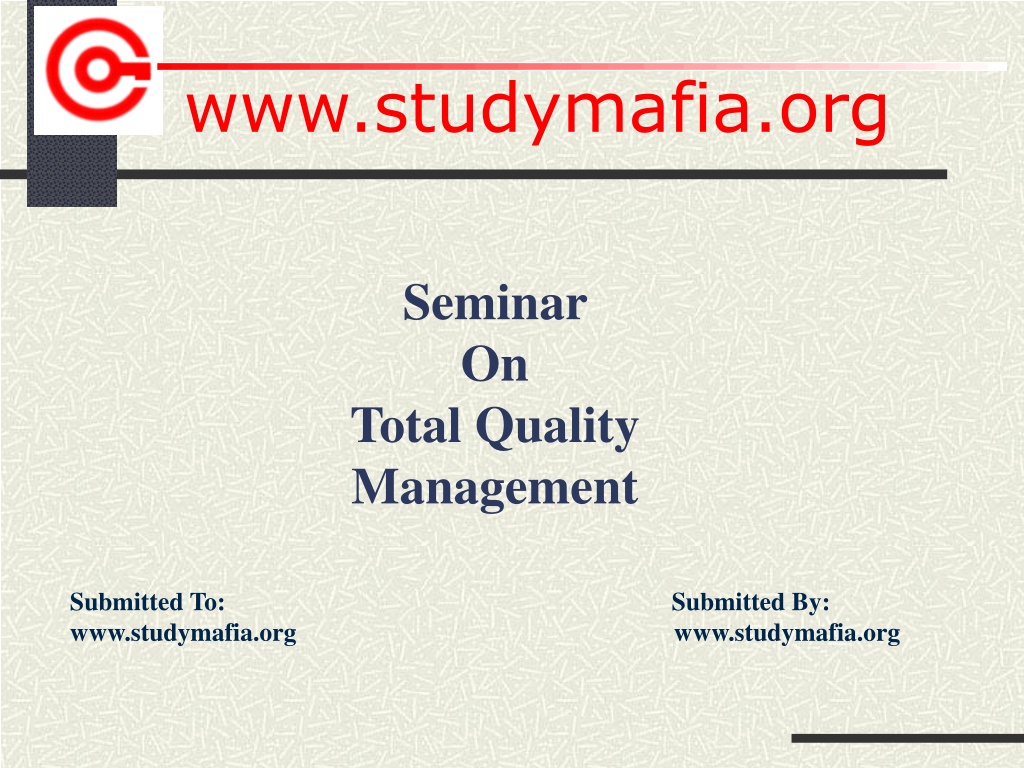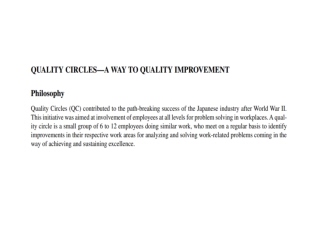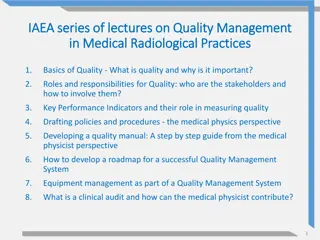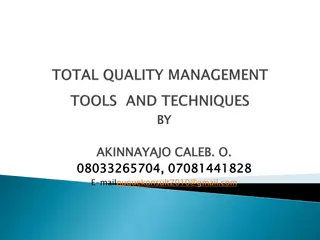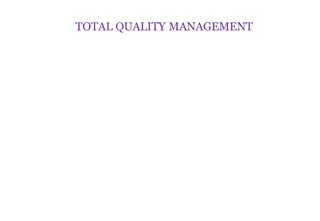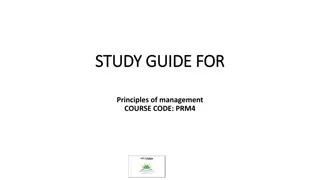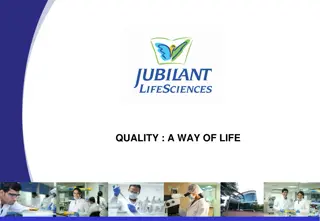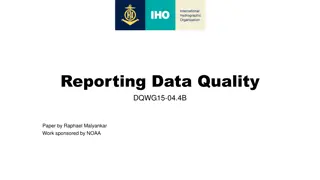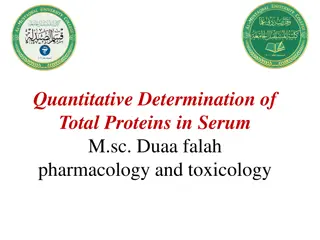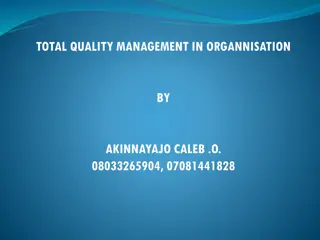Understanding Total Quality Management (TQM) Principles and Benefits
Total Quality Management (TQM) is a management philosophy focused on improving product and process quality continuously. It involves integrating tools, techniques, and training to ensure customer satisfaction. TQM emphasizes employee participation, teamwork, and enhancing working relationships to deliver high-quality products and services. The principles of quality management, the eight elements of TQM, advantages, and disadvantages are discussed, along with examples showcasing the effectiveness of TQM in practice.
- Quality Management
- TQM Principles
- Employee Participation
- Continuous Improvement
- Customer Satisfaction
Download Presentation

Please find below an Image/Link to download the presentation.
The content on the website is provided AS IS for your information and personal use only. It may not be sold, licensed, or shared on other websites without obtaining consent from the author. Download presentation by click this link. If you encounter any issues during the download, it is possible that the publisher has removed the file from their server.
E N D
Presentation Transcript
www.studymafia.org Seminar On Total Quality Management Submitted To: www.studymafia.org Submitted By: www.studymafia.org
Content Introduction What does TQM mean? Benefits of TQM TQM Examples The principles of quality management The Eight Elements of TQM Advantages of total quality management The Disadvantages of TQM Conclusion References
Introduction Total quality management or TQM is an integrative philosophy of managment for continuously improving the quality of products and processes. It is used around the world.
What does TQM mean? Total Quality Management means that the organization's culture is defined by and supports the constant attainment of customer satisfaction through an integrated system of tools, techniques, and training. This involves the continuous improvement of organizational processes, resulting in high quality products and services.
Benefits of TQM Improve quality. Employee participation. Teamwork. Working relationships. Customer satisfaction.
TQM Examples Plasto Toys manufactures plastic toys for kids. The brand managed to acquire a good reputation in the market, and parents relied on it for quality products. However, the regular environmental campaigns on plastic pollution affected the sale of the toys to a great extent, causing the company to incur huge losses. As a response to this, the company management and executives agreed to implement the TQM approach for manufacturing toys using biodegradable plastics. The marketing department started advertising and promoting how their toys are harmless to the environment. In just a couple of months, Plasto Toys regained its original position in the market.
The Eight Elements of TQM Ethics Integrity Trust Training Teamwork Leadership Recognition Communication
Advantages of total quality management 1. Emphasizing the needs of the market 2. Assures better quality performance in every sphere of activity 3. Helps in checking non-productive activities and waste 4. Helpful in meeting the competition 5. It helps in developing an adequate system of communication 6. Continuous review of progress
The Disadvantages of TQM Demands a Change in Culture Demands Planning, Time and Resources Quality is Expensive Takes Years to Show Results Discourages Creativity Not a Quick-Fix Solution
Conclusion Total Quality Management is practiced by many business organizations around the world. It is a proven method for implementing a quality conscious culture across all the vertical and horizontal layers of the company. Although there are many benefits, one should take the cost into the account when implementing TQM.
References www.google.com www.wikipedia.com www.studymafia.org
